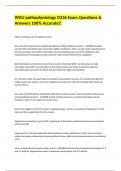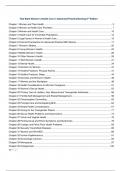Samenvatting
Corporate Finance: Summary + Class notes (Bridging MBA - KUL Brussels)
- Vak
- Instelling
- Boek
ENGLISH SUMMARY FOR BRIDGING PROGRAM MBA at KUL Prof.: Dr. Praet Alain Textbook: Principles of Corporate Finance; Second Custom Edition; Hilde Decan, Bert D'Espallier, Alain Praet, Geert Van Campenhout Course content: Ch1 - Introduction to corporate finance Ch2 - How to calculate present va...
[Meer zien]














